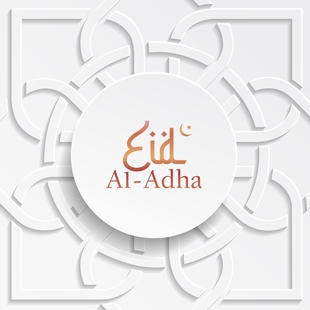Eid al-Adha (Feast of Sacrifice) occurs on the 10th day of Dhu al-Hijjah, the twelfth and last month of the Islamic year, and lasts for two to four days. Eid al-Adha concludes the days of the pilgrimage and celebrates the prophet Ibrahim’s (Abraham) complete faith and surrender to the will of God in his willingness to obey God’s command to sacrifice his eldest son Ismail (Ishmael). Before Ibrahim could do so, God sent the angel Jibril (Gabriel) with a lamb to sacrifice instead.
During Hajj and Eid, Muslims heighten their connection to the community through the humbling and equalizing experience of performing the rites of the pilgrimage with millions of other Muslims, as well as through donating to those in need. A key part of Eid al-Adha is making a sacrifice of an animal — which is distributed to those in need — in remembrance of Ibrahim’s and Ismail’s sacrifice. Making this sacrifice is associated with forgiveness of all one’s previous wrongdoings.
Muslims customarily attend the mosque for Eid prayers in the morning, which involves a khutbah (sermon) followed by a short congregational prayer. Congregants then celebrate together in community, often sharing a special meal and exchanging gifts with family and friends. Like Eid al-Fitr, Eid al-Adha is an official government and school holiday in many countries.
To Name this Day:
 Personal Exploration
Personal Exploration
Read questions and answers regarding Islamic jurisprudence on Eid al-Adha.
 Spiritual Practice
Spiritual Practice
Follow the expert guidance on acts of worship and following the example of Prophet Muhammad on Eid al-Adha from The Night of Eid and Sunnahs of Eid al-Adha.
